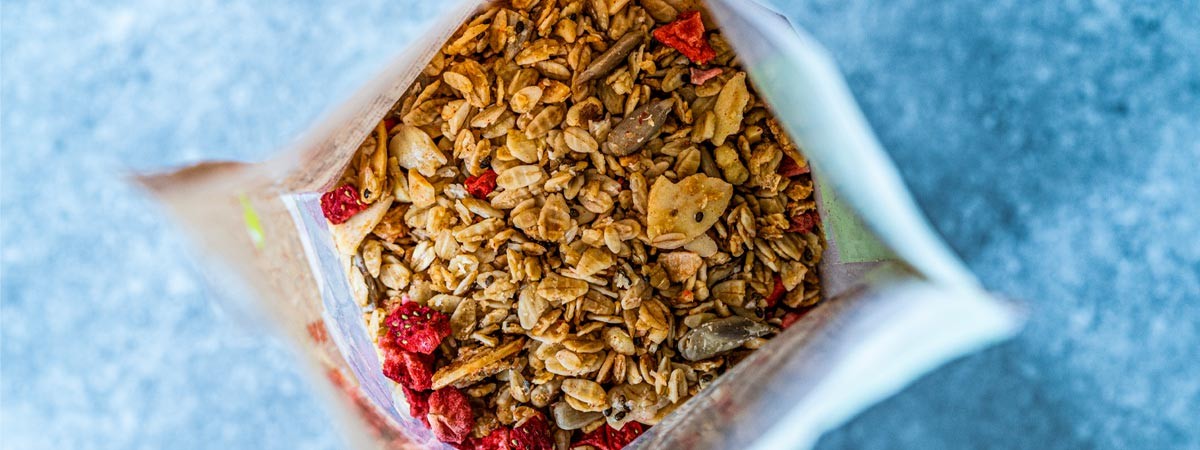The word “muesli” is one of the very few Swiss German words that, with some small spelling variations, has made its way into languages throughout the world. This well-known and well-loved food was originally intended to be eaten as an appetizer. Today, the mixture of oats, nuts, and dried fruit is best known as a breakfast dish, with almost endless possibilities to customize it to suit different tastes.

Safe Transport for Muesli
Soft cushioning in a modified atmosphere
Alongside a hot cup of coffee or tea, cereal boxes are a staple item on breakfast tables in many countries. Whether served with milk, yogurt, or cream, breakfast cereals are packaged with the help of vacuum, provided by vacuum pumps from Busch.
The word “muesli” is one of the very few Swiss German words that, with some small spelling variations, has made its way into languages throughout the world. This well-known and well-loved food was originally intended to be eaten as an appetizer. Today, the mixture of oats, nuts, and dried fruit is best known as a breakfast dish, with almost endless possibilities to customize it to suit different tastes.
The word “muesli” is one of the very few Swiss German words that, with some small spelling variations, has made its way into languages throughout the world. This well-known and well-loved food was originally intended to be eaten as an appetizer. Today, the mixture of oats, nuts, and dried fruit is best known as a breakfast dish, with almost endless possibilities to customize it to suit different tastes.
The traditional healing muesli
Muesli was created as the ultimate health food. Dr Maximilian Bircher-Benner, a doctor in a Swiss sanatorium, first came up with the idea as part of treatment for tuberculosis. After suffering from jaundice, he attributed his swift recovery to his raw food diet and became convinced of its healing properties. The traditional recipe of Bircher muesli is now named after him, but at the time, it was known as “Apfeldiätspeise” (“apple diet meal”). This name drops a big hint about the key ingredient in the original recipe. In fact, the whole recipe hinged around grating a raw apple in its entirety – including even core and seeds – into a bowl of oats and nuts. This was served with water, lemon juice, and condensed milk. The variations found at the breakfast buffet in hotels today may differ slightly: Typical substitutes are for something sweeter than lemon juice, like orange or apple juice, more exotic fresh fruits, or dried fruit rather than fresh. But, even though it is no longer touted as a miracle food, the association of muesli as a healthy and satisfying start to the day remains.
Muesli was created as the ultimate health food. Dr Maximilian Bircher-Benner, a doctor in a Swiss sanatorium, first came up with the idea as part of treatment for tuberculosis. After suffering from jaundice, he attributed his swift recovery to his raw food diet and became convinced of its healing properties. The traditional recipe of Bircher muesli is now named after him, but at the time, it was known as “Apfeldiätspeise” (“apple diet meal”). This name drops a big hint about the key ingredient in the original recipe. In fact, the whole recipe hinged around grating a raw apple in its entirety – including even core and seeds – into a bowl of oats and nuts. This was served with water, lemon juice, and condensed milk. The variations found at the breakfast buffet in hotels today may differ slightly: Typical substitutes are for something sweeter than lemon juice, like orange or apple juice, more exotic fresh fruits, or dried fruit rather than fresh. But, even though it is no longer touted as a miracle food, the association of muesli as a healthy and satisfying start to the day remains.